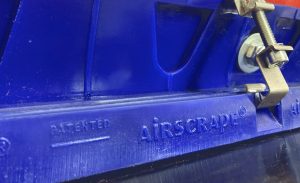By enhancing the power of data, Sandvik Mining and Rock Solutions’ remote monitoring service (RMS) is taking proactive maintenance to another level. This high-tech capability dives deeper into the information generated by Sandvik drills, loaders and trucks – to further improve their productivity and cost-effectiveness.
This has been witnessed in the company’s remote monitoring service (RMS), which has rapidly evolved from the company’s telemetry data reporting solution, better known as My Sandvik Insight Insight and Productivity for underground. RMS takes further digital steps to give mines even more uptime and productivity while prioritising safety and driving down maintenance costs.
“The digital age has seen mines embracing the value of data in their decision making, and as an OEM we support this by raising the value of data to another level,” explains Zandre de Witt, portfolio specialist for RMS and Digitalisation at Sandvik Mining and Rock Solutions. “We use data to generate more detailed insights into machine health, which allows mining operations to embrace a proactive maintenance mind set.”
The My Sandvik telemetry data reporting solution, already operational in the field for about eight years, has allowed data to be gathered on the ‘Knowledge Box’ installed on Sandvik equipment – and even transmitted and stored to be displayed on digital dashboards. RMS takes this further towards meeting the strategic objectives of mining customers, according to Logan Pillay, Sales Support Manager at Sandvik Mining and Rock Solutions.
“The strategic focus today is on safety, cost effectiveness, productivity and sustainability – and RMS allows us to find the opportunities in the data to accelerate our path on this journey,” says Pillay. “It is about the conclusions to be drawn from the various combinations of readings from our technology; these insights then feed into response processes and our interactions with customers, to improve and streamline operations.”
RMS is most capable on Sandvik’s i-series drills, loaders and trucks, which come standard with intelligent capability. Through the company’s Global Reliability Centre, reports on each item of equipment are generated through a range of powerful algorithms, pointing to potential issues demanding attention.
“We can pick up indicators that there is dust ingress into an engine, for instance, which could severely damage components within a matter of days,” he says. “Through the protocols that we have established with customers, we would then contact the correct person on site and alert them to the identified risk before it leads to an unplanned stoppage.”
The report to the customer would include not only the readings and analysis, but also practical recommendations for maintenance teams to follow in the investigation of the issue. It is therefore little surprise that the uptake of RMS has been enthusiastic – with over 40% of the entire connected fleet in Southern Africa having moved onto the RMS customer base.
De Witt highlights that the mining sector includes a growing number of younger managers, engineers and technicians who readily embrace the digital revolution, and want to put technology to work in improving operations.
“Our experience is that mining staff are increasingly data hungry when it comes to monitoring and maintaining equipment,” he says. “They also want to see this data in real time, and in a fully analysed format to guide quick decisions.”
Local understanding of mining operations is also a key factor in the successful application of RMS, says Pillay. Sandvik Mining and Rock Solutions is therefore continuously upgrading the skill levels of its local staff, to contextualise and apply the support being received from the company’s global data experts. There has been considerable experience developed in applying RMS in underground mining, and the company now has exciting pilot initiatives underway in the opencast environment.
The benefits of RMS have been demonstrated not only through avoiding unscheduled downtime, but by achieving longer lifecycles between maintenance through improved operator techniques and behaviour. RMS also allows production cycles to be tracked and analysed, creating opportunities to identify more productive strategies that boost the bottom line.





